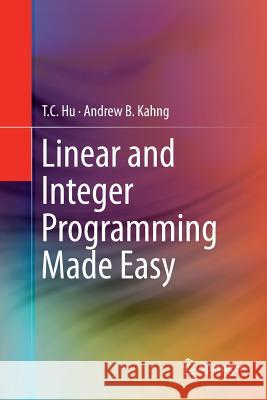Linear and Integer Programming Made Easy » książka
topmenu
Linear and Integer Programming Made Easy
ISBN-13: 9783319795683 / Angielski / Miękka / 2018 / 143 str.
Linear and Integer Programming Made Easy
ISBN-13: 9783319795683 / Angielski / Miękka / 2018 / 143 str.
cena 230,76 zł
(netto: 219,77 VAT: 5%)
Najniższa cena z 30 dni: 229,69 zł
(netto: 219,77 VAT: 5%)
Najniższa cena z 30 dni: 229,69 zł
Termin realizacji zamówienia:
ok. 20 dni roboczych.
ok. 20 dni roboczych.
Darmowa dostawa!
Kategorie:
Kategorie BISAC:
Wydawca:
Springer
Język:
Angielski
ISBN-13:
9783319795683
Rok wydania:
2018
Wydanie:
Softcover Repri
Ilość stron:
143
Waga:
0.23 kg
Wymiary:
23.39 x 15.6 x 0.84
Oprawa:
Miękka
Wolumenów:
01
Dodatkowe informacje:
Wydanie ilustrowane











